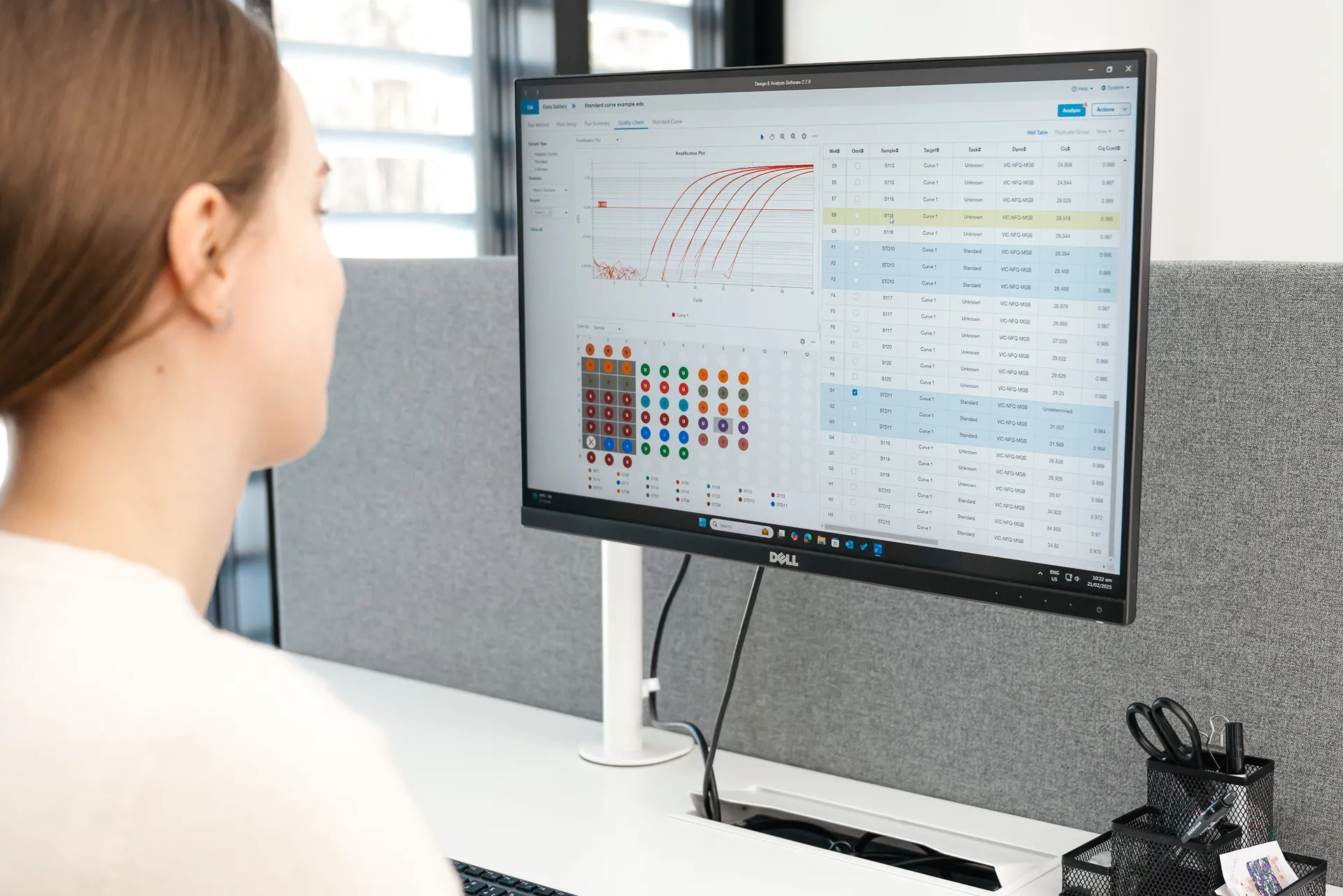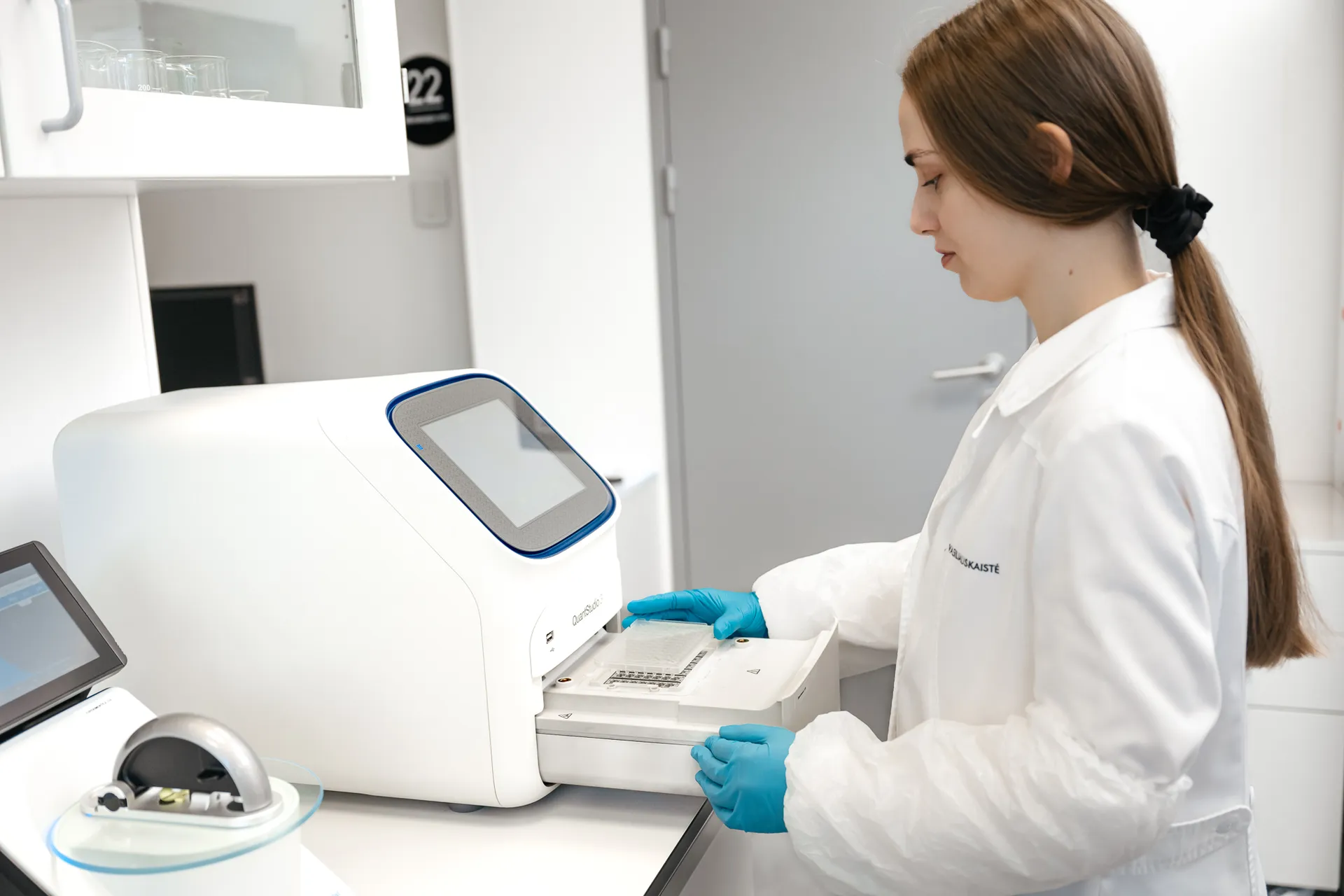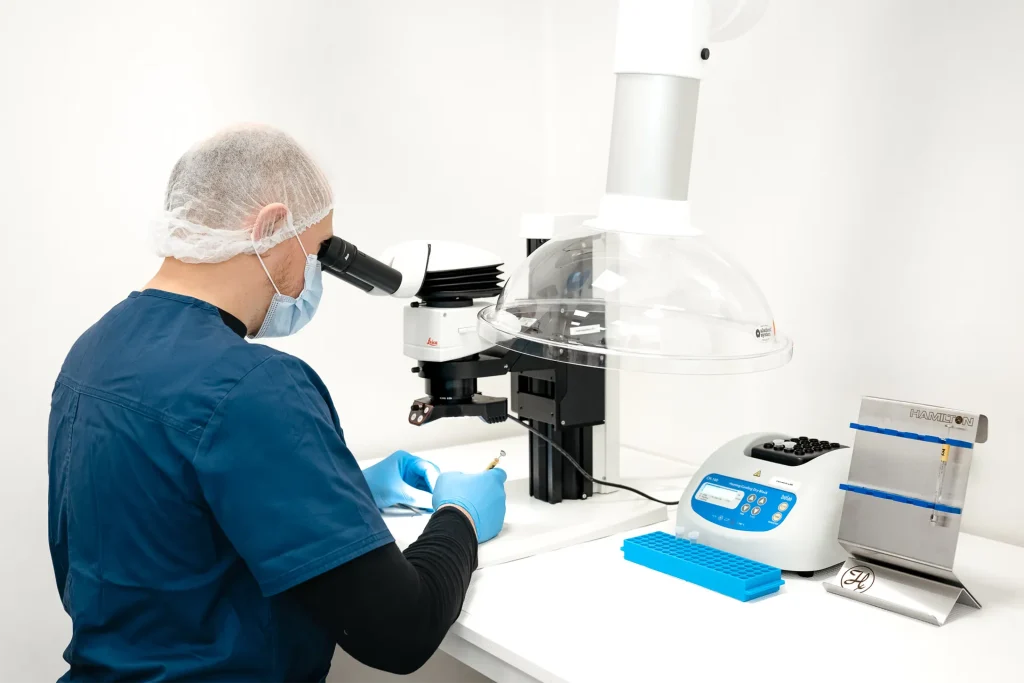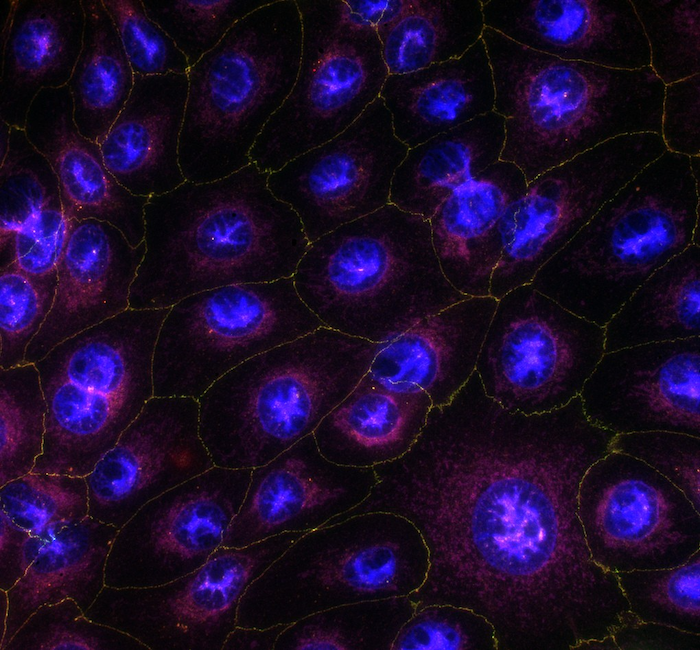Our expertise
RT-qPCR
Quantitative polymerase chain reaction (qPCR) is a highly sensitive and precise technique used to measure gene expression in ocular tissues and cells, making it invaluable for studying molecular changes associated with eye diseases. This method begins with RNA extraction from ocular samples, including the retina, cornea, lens, or optic nerve, followed by reverse transcription to generate complementary DNA (cDNA). Specific gene targets are then amplified and detected using fluorescent probes or intercalating dyes, allowing real-time quantification of gene expression levels. qPCR is particularly useful for investigating the role of inflammation, oxidative stress, and neurodegeneration in conditions such as glaucoma, diabetic retinopathy, and age-related macular degeneration (AMD). It can detect even subtle changes in transcriptional activity, enabling researchers to identify early disease biomarkers and assess treatment responses.
One of our company’s core offerings is relative gene expression analysis using TaqMan assay-based qPCR. This highly specific and sensitive method enables precise quantification of target genes. TaqMan assays use fluorescent probes that hybridize to specific DNA sequences, ensuring accurate detection and minimizing background signal. Experimentica offers pre-validated TaqMan assays for commonly studied genes involved in inflammation, oxidative stress, angiogenesis, and neuroprotection, such as VEGFA, BAX, BCL-2, TXNIP, HIF1α, NEFL and more.
In addition to standardized assays, Experimentica provides custom method development services for specialized ocular research projects. We collaborate with clients to design and optimize custom qPCR assays tailored to unique gene targets, sample types (not only ocular tissues), and experimental conditions. This includes guidance on primer and probe design, validation of new biomarkers, and optimization of RNA extraction and cDNA synthesis protocols for challenging ocular samples. Furthermore, we support multiplex qPCR assays for simultaneous detection of multiple gene targets, streamlining workflows and increasing data efficiency.


We are here to help
Whether you have a question about our preclinical models, capabilities, pricing or anything else, our team is ready to answer all your inquiries.
Related services
Laser-Induced Choroidal Neovascularization
Laser-induced CNV model mimics exudative AMD and supports evaluation of anti-angiogenic and anti-fibrotic therapies.
Learn moreDL-AAA–Induced Retinal Neovascularization and Chronic Leakage
DL-AAA-induced rabbit model enables long-term evaluation of retinal neovascularization and leakage with in vivo imaging and response to anti-VEGF therapy.
Learn moreRetinitis Pigmentosa
Retinitis pigmentosa studies at Experimentica combines genetic models with in vivo imaging and molecular analysis tools.
Learn moreCheck out our latest news and activities
All News






